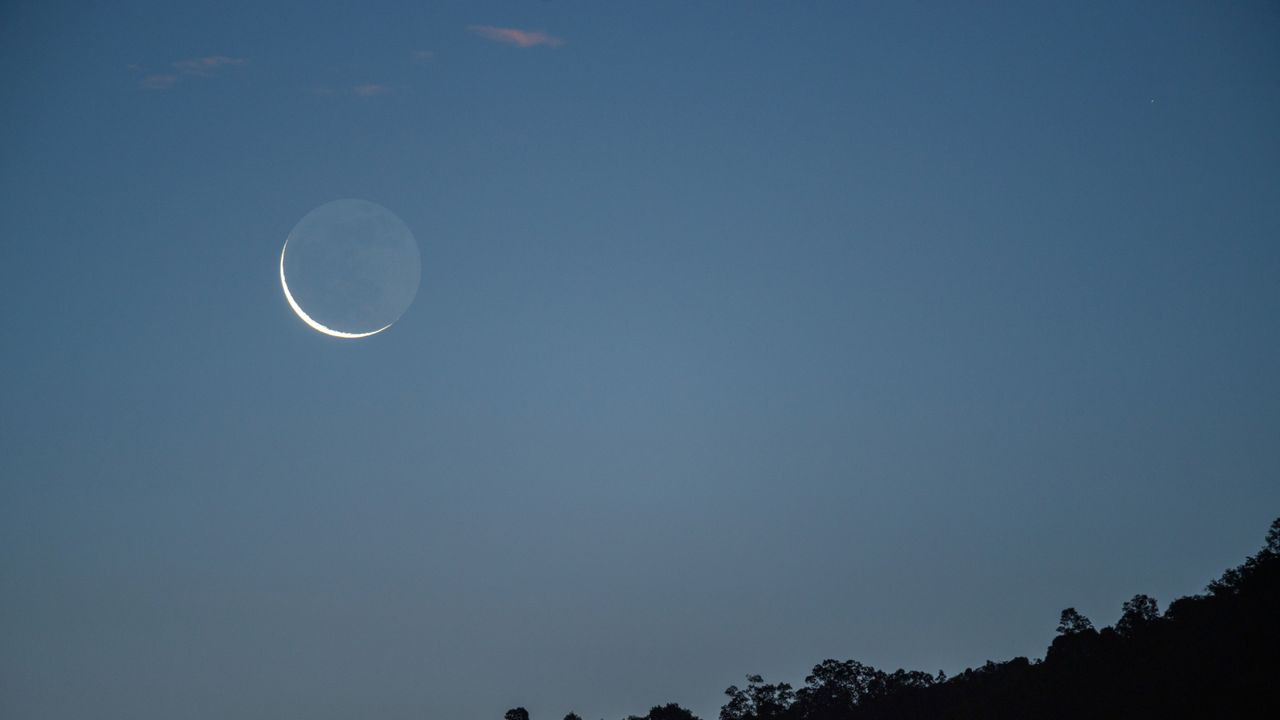Now Reading: Crescent Moon and Jupiter to Align in Stunning Pre-Dawn Show on July 23
-
01
Crescent Moon and Jupiter to Align in Stunning Pre-Dawn Show on July 23
Crescent Moon and Jupiter to Align in Stunning Pre-Dawn Show on July 23

Quick Summary:
- Teh crescent moon will appear close to Jupiter in the morning sky on July 23, illuminated by Earthshine, a phenomenon where sunlight reflected off Earth’s surface lights up the shadowed portion of the moon.
- viewers can observe this celestial event by looking east around 4 a.m. local time before dawn. Jupiter will be approximately 5 degrees to the right of the moon, and Venus will form a cosmic triangle with betelgeuse near the eastern horizon.
- Telescopes with at least a 6-inch aperture can reveal Jupiter’s four brightest moons (Io, Europa, Ganymede, and Callisto) and its cloud layers. Observers are cautioned against directing telescopes toward the rising sun due to potential damage to eyesight.
- Earthshine or “Da Vinci Glow” is visible surrounding new moon dates; it accentuates features like lunar seas formed billions of years ago from volcanic activity post-cataclysmic asteroid impacts.
- The Pleiades star cluster will be visible near Venus in dark sky locations on July 23. Binoculars or telescopes magnify details for stargazers.
Indian Opinion Analysis:
This celestial spectacle offers valuable opportunities for amateur astronomers in India. Stargazing events like these help raise awareness about astronomy as both an educational interest and recreational pastime. In urban Indian areas challenged by light pollution, fostering interest through accessible tools such as apps or affordable binoculars can enhance public engagement with science.
India has shown growing support for scientific exploration-notably through ISRO’s astronomical missions like Chandrayaan-and events such as this could inspire further curiosity among future space enthusiasts. Educational campaigns tied into observational activities might also encourage greater participation from schools across cities and rural areas alike.
Read more: space.com article



























